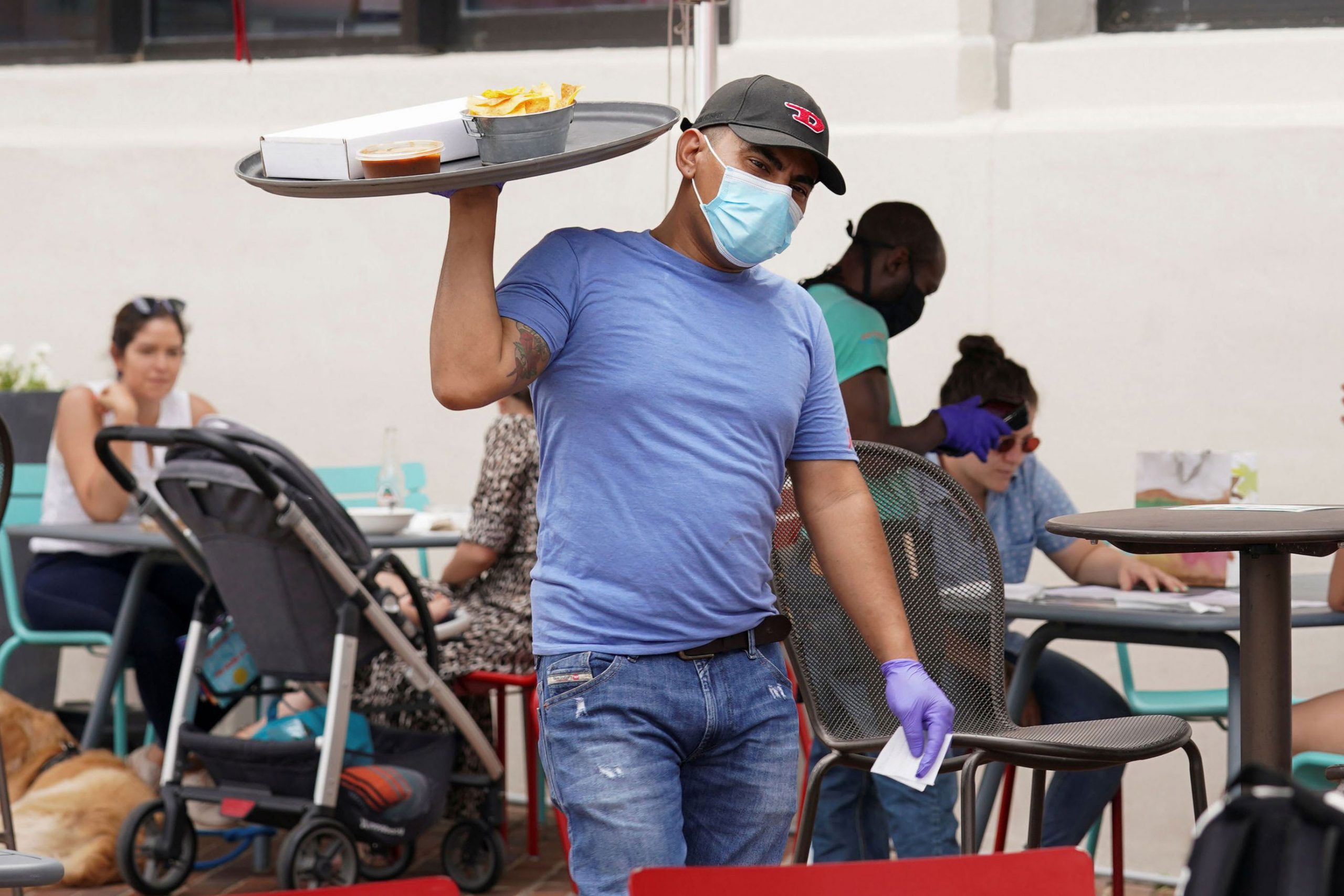
The U.S. economy added fewer jobs than expected during September, a development some economists see as another sign the rebound from the springtime recession could be slowing.
The Labor Department reported Friday that payrolls increased by 661,000, below the 800,000 estimate that economists polled by Dow Jones had expected. The unemployment rate drifted lower to 7.9%.
CNBC studied the net changes by industry for September jobs based on data contained in the employment report.
Leisure and hospitality continued to post strong numbers after being battered earlier in the year as Covid-19 and efforts to contain its spread froze travel plans and shuttered restaurants around the country.
The sector, which added 318,000 jobs last month, saw about 60% of that growth from restaurants and bars that rehired workers as the third quarter ended.
Despite job gains totaling 3.8 million over the last five months, employment in food services and drinking places is still down by 2.3 million since February as economic scars from the coronavirus continue to blight the recovery.
And while much of September’s upside came from the food service industry, a marked slide in government employment kept a lid on the gains. Government employment fell by 216,000 across federal, state and local levels.
Though government hiring has been choppy in recent months thanks to federal hiring for the 2020 Census, September’s jobs losses in the public sector were related to education at the state and local levels.
CNBC reached out to the Labor Department for clarification on the local-level education layoffs. Katelynn Harris, an economist at the Bureau of Labor Statistics, offered the following statement:
“Government education (State and Local) employment can range from teachers and administrators to janitors and cafeteria workers; anyone who is paid by the government,” she wrote. “However, CES does not differentiate between the types of workers within the institutions.”
“The drop is not Census related, which was down 41,000,” she added.
State government education and local government education lost 49,000 jobs and 231,000 jobs, respectively. Those losses reflect layoffs at public universities on the state level and layoffs at elementary, middle and high schools on the local level.
“There were large losses in the public sector in September, not only because of the decrease of temporary Census workers, but more acutely because of the losses in local K-12 education,” wrote Elise Gould, senior economist at the Economic Policy Institute. “Education employment was already suffering prior to the current economy crises. School systems need more, not fewer, resources in these challenging times.”
Retail was a brighter spot in September with a net addition of 142,400 jobs. Many of those gains occurred thanks to hiring at clothing stores (39,800) and general merchandise including department, supercenters and wholesale clubs (19,500).
“Job growth has slowed in recent months as stimulus has faded and COVID-19 cases rise, strengthening the case for more fiscal stimulus,” Jeff Buchbinder, equity strategist at LPL Financial, said in an emailed statement.
“It will be very interesting to see what impact President Trump’s COVID-19 diagnosis has on those negotiations, the pace of re-openings, and the jobs recovery,” he added.
Professional and business services, which encompasses a wide variety of experts from engineers and architects to consultants and lawyers, added 89,000 jobs. Architects and engineers added about 13,000 jobs while computer system designers gained 11,700.
“These improvements in the labor market reflect the continued resumption of economic activity that had been curtailed due to the coronavirus (COVID-19) pandemic and efforts to contain it,” the government said in a release.
“In September, notable job gains occurred in leisure and hospitality, in retail trade, in health care and social assistance, and in professional and business services,” the Labor Department added. “Employment in government declined over the month, mainly in state and local government education.”
— CNBC’s Nate Rattner contributed reporting.


 Signal2forex.com - Best Forex robots and signals
Signal2forex.com - Best Forex robots and signals




